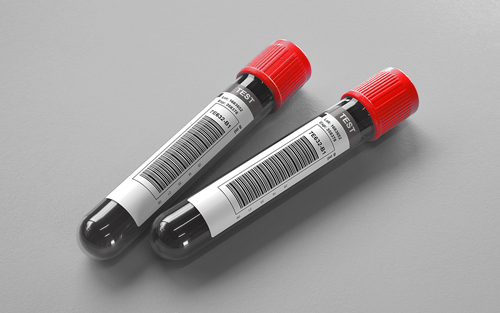Lead, Blood (Capillary)
Ordering Recommendation
Recommended routine screening for lead exposure in pediatric populations. Confirm elevated results with Lead, Blood (Venous) (0020098).
New York DOH Approval Status
Specimen Required
Clean puncture site well with soap and water before collection procedure begins.
Lavender microtainer (K2EDTA)
Invert specimen 10 times to prevent clot formation. Transport 0.5 mL whole blood in the original collection tube. (Min: 0.3 mL)
Room temperature. Also acceptable: Refrigerated.
Specimens collected in tubes other than lavender microtainer (K2EDTA). Specimens transported in tubes other than trace element-free transport tubes or lavender microtainer (K2EDTA) tubes. Heparin anticoagulant. Clotted specimens.
Venous whole blood, refer to Lead, Blood (Venous) (ARUP test code 0020098).
Ambient: Indefinitely; Refrigerated: Indefinitely; Frozen: Unacceptable
Methodology
Quantitative Inductively Coupled Plasma-Mass Spectrometry (ICP-MS)
Performed
Sun-Sat
Reported
1-3 days
Reference Interval
Effective December 6, 2021
| 0-5 years | Less than or equal to 3.4 µg/dL |
| 6 years or above | Less than or equal to 4.9 µg/dL |
Interpretive Data
Analysis performed by inductively coupled plasma-mass spectrometry (ICP-MS).
Elevated results may be due to skin or collection-related contamination, including the use of a noncertified lead-free collection/transport tube. If contamination concerns exist due to elevated levels of blood lead, confirmation with a venous specimen collected in a certified lead-free tube is recommended.
Repeat testing is recommended prior to initiating chelation therapy or conducting environmental investigations of potential lead sources. Repeat testing collections should be performed using a venous specimen collected in a certified lead-free collection tube.
Information sources for blood lead reference intervals and interpretive comments include the CDC's "Childhood Lead Poisoning Prevention: Recommended Actions Based on Blood Lead Level" and the "Adult Blood Lead Epidemiology and Surveillance: Reference Blood Lead Levels (BLLs) for Adults in the U.S." Thresholds and time intervals for retesting, medical evaluation, and response vary by state and regulatory body. Contact your State Department of Health and/or applicable regulatory agency for specific guidance on medical management recommendations.
| Children | |
|---|---|
| Concentration | Comment |
| 3.5-19.9 µg/dL | Children under the age of 6 years are the most vulnerable to the harmful effects of lead exposure. Environmental investigation and exposure history to identify potential sources of lead. Biological and nutritional monitoring are recommended. Follow-up blood lead monitoring is recommended. |
| 20-44.9 µg/dL | Lead hazard reduction and prompt medical evaluation are recommended. Contact a Pediatric Environmental Health Specialty Unit or poison control center for guidance. |
| Greater than 44.9 µg/dL | Critical. Immediate medical evaluation, including detailed neurological exam is recommended. Consider chelation therapy when symptoms of lead toxicity are present. Contact a Pediatric Environmental Health Specialty Unit or poison control center for assistance. |
| Adults | |
|---|---|
| Concentration | Comment |
| 5-19.9 µg/dL | Medical removal is recommended for pregnant women or those who are trying or may become pregnant. Adverse health effects are possible. Reduced lead exposure and increased blood lead monitoring are recommended. |
| 20-69.9 µg/dL | Adverse health effects are indicated. Medical removal from lead exposure is required by OSHA if blood lead level exceeds 50 µg/dL. Prompt medical evaluation is recommended. |
| Greater than 69.9 µg/dL | Critical. Immediate medical evaluation is recommended. Consider chelation therapy when symptoms of lead toxicity are present. |
Laboratory Developed Test (LDT)
Note
Hotline History
CPT Codes
83655
Components
| Component Test Code* | Component Chart Name | LOINC |
|---|---|---|
| 0020745 | Lead, Blood (Capillary) | 10368-9 |
Aliases
- Pb, Pediatric
- Pb
- Pb, Blood
- Pb, Whole Blood
- BLL
- Capillary blood level
- Lead (Pediatric)
















